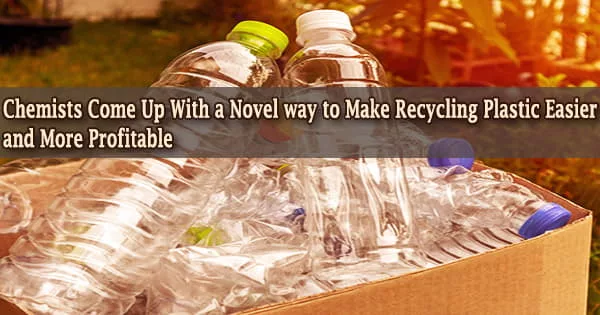According to a 2020 study, the United States produces more plastic trash than any other country, generating 46.3 million tons or 287 pounds per person each year. The country’s current recycling rate of 9% will never keep up.
Why so low?
The nature of today’s polymers makes recycling extremely challenging. Even melted-down thermoplastics deteriorate with each use. And this brings us to the real economics of recycling. There is just no profit motive.
However, researchers from the University of North Carolina in Chapel Hill have discovered a way to break down plastics to create a new material that is stronger and tougher than the original, perhaps making it more valuable.
“Our approach views plastic waste as a potentially valuable resource for the production of new molecules and materials,” said Frank Leibfarth, assistant professor of chemistry in the UNC College of Arts & Sciences. “We hope this method could drive an economic incentive to recycle plastic, literally turning trash into treasure.”
In the journal Science, Leibfarth and UNC-Chapel Hill professor Erik Alexanian, who specializes in chemical synthesis, suggest a method that could stop the loop on plastic recycling.
Carbon-hydrogen bonds are among nature’s most powerful chemical bonds. Because of their durability, it is difficult to convert natural ingredients into medications and to recycle commercial plastics.
Polymers’ life duration could be extended beyond single-use plastic by changing the carbon-hydrogen bonds that are ubiquitous in polymers, the building blocks for contemporary plastic used in shopping bags, soda and water bottles, food packaging, vehicle parts, and toys.
Our approach views plastic waste as a potentially valuable resource for the production of new molecules and materials. We hope this method could drive an economic incentive to recycle plastic, literally turning trash into treasure.
Frank Leibfarth
The UNC chemists were able to form new connections in previously unreactive areas using a newly discovered reagent that could extract hydrogen atoms from pharmaceutical molecules and polymers.
“The versatility of our approach is that it enables many valuable transformations of carbon-hydrogen bonds on such a wide range of important compounds,” Alexanian said.
Turning trash into treasure
Carolina’s Leibfarth Group is dedicated to developing smarter, more useful, and more sustainable polymers. The team produced a super-absorbent polymer capable of eliminating harmful pollutants from drinking water with the help of the NC Policy Collaboratory.
Researchers hoped to use the novel strategy to assist in the transformation of difficult-to-recycle plastic trash into a high-value class of polymers. They began with plastic foam packaging, which was once used to protect gadgets during shipping but now finds up in landfills.
High Cube LLC, a Durham, N.C.-based recycling company, offered samples of post-consumer foam. The foam is made of a commercial polyolefin, which is a low-density plastic.
Chemists discovered a means to extend the life of single-use plastics by selectively extracting hydrogen atoms from polyolefin, resulting in a high-value plastic known as an ionomer. Dow’s SURLYNTM, a go-to material utilized in a wide variety of food packaging, is a popular ionomer.
The majority of recycled plastic is “downcycled” into lower-quality items such as carpet or polyester garments, which may still end up in landfills. If turtles mistake ocean garbage for food, discarded plastics in streams imperil sea life.
“It could change the way we look at plastic,” Leibfarth said, if the technique can be applied to polymers again to help recycle them. Timothy Fazekas, Jill W. Alty, Eliza K. Neidhart, and Austin S. Miller are among the study’s co-authors.
The research was financed by the National Institute of General Medical Sciences, the Air Force Office of Scientific Research, the National Science Foundation, and the University of North Carolina Department of Chemistry.





